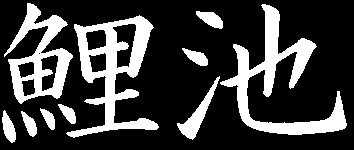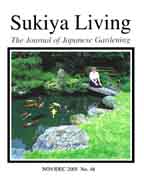|
Koi Pond Construction
 Most successful koi ponds have a number
of key elements in common. One important item is a bottom drain.
Another is a koi pond filter that can handle the large amounts of waste
produced by healthy koi. Other important elements include aeration
systems, skimmers to remove surface debris, and pumps to recirculate pond
water back up to header pools.
Most successful koi ponds have a number
of key elements in common. One important item is a bottom drain.
Another is a koi pond filter that can handle the large amounts of waste
produced by healthy koi. Other important elements include aeration
systems, skimmers to remove surface debris, and pumps to recirculate pond
water back up to header pools.
The koi ponds seen in Japanese gardens are not the same as ordinary backyard water features. They are carefully crafted works of art, and they present some special engineering challenges that aren't seen in most ordinary koi ponds. For one thing, aesthetics play an EXTREMELY large role, and the appearance of the pond itself is usually more important than the fish swimming in it. A pond's shape, position, edging materials, and construction techniques are all finely tuned to create the desired scenic effect.
A pond's edge treatment is particularly important. There are several commonly-used edging techniques, but the standard gogan pattern and the use of large edge boulders are particularly important. Nearly every successful Japanese garden waterfeature includes at least a few huge rocks positioned at the waterline. These large boulders can each weigh several tons, and they require special engineering systems that are hidden from view but important nevertheless.
JOJG publishes several articles each year that discuss these and other issues. Some of the articles can be grouped under the category of "swimming pool engineering." Other articles are more directly linked to koi pond construction. A few sample koi pond construction articles are posted below for your review.
----------------------------------------------------
KOI POND AERATION Ensuring the proper amount of oxygen in your pond water is critical for koi health and algae prevention. This article explains the details about koi pond aeration.
WHAT IS RUBBER WATERSTOP? Waterstop is a gasket-like rubber material that spans the gap between successive concrete pours. It is installed in many types of concrete vessels, from swimming pools to koi ponds to the polar bear habitat at your local zoo.
KOI POND FILTERS This 4-page article is about koi pond filters. The best koi pond filters are not one single piece of equipment, but rather they are a combination of several different items. This article discusses the four essential elements that all good koi pond filters need to have. Originally titled, "What is a Vortex Settling Chamber," the article explains in detail the first of those four koi pond filter elements.
WHAT IS A CATCH BASIN? If you shut off your pond's water pump, all of the water that is upstream of your pond will flow down toward the lowest point in the system. This can cause flooding and other undesirable side effects. This 4-page article explains why catch basins can help deal with the situation and keep your pond's water level stable.
BUILD A KOI POND BIOLOGICAL FILTER The best koi pond filters have separate sections to perform different tasks. This article talks about the section that is called the "biological filter."
CONCRETE TESTING Most serious high-quality vessels are made of concrete. This includes swimming pools, municipal water systems, and high-end koi ponds. But all concrete is not created equally. This article details how you can test concrete and prevent low-grade material from being used in your own projects.
WATER GARDEN PUMPS The most famous water gardens in Japan are centuries old and have clay-lined ponds that are fed by streams or canals. This arrangement is not practical for most backyard koi keepers who need to use pumps to drive self-contained systems. This article discusses water garden pumps and how to use them in your koi ponds and Japanese garden water features.
--------------------------------------------------------------

